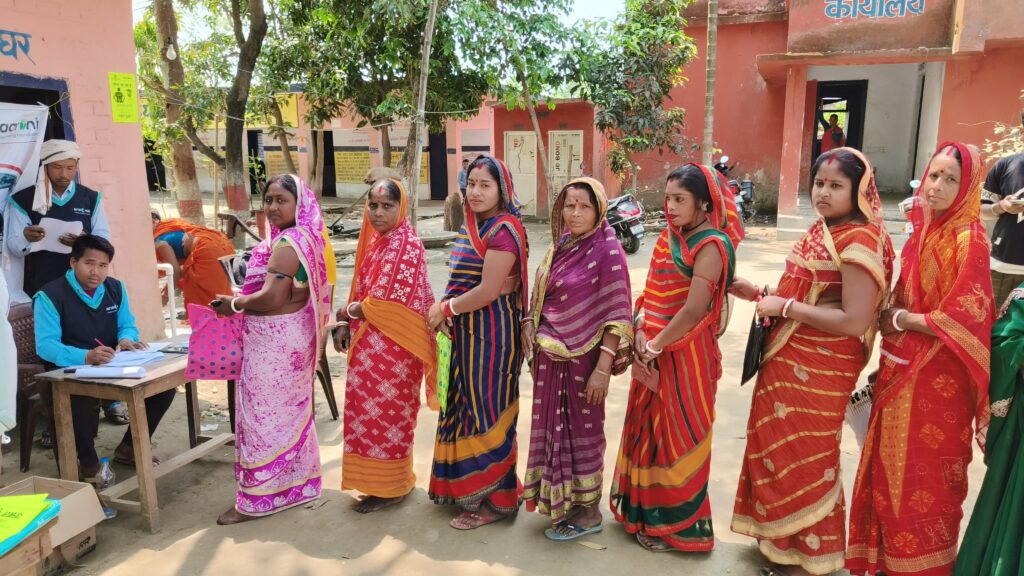BLOG
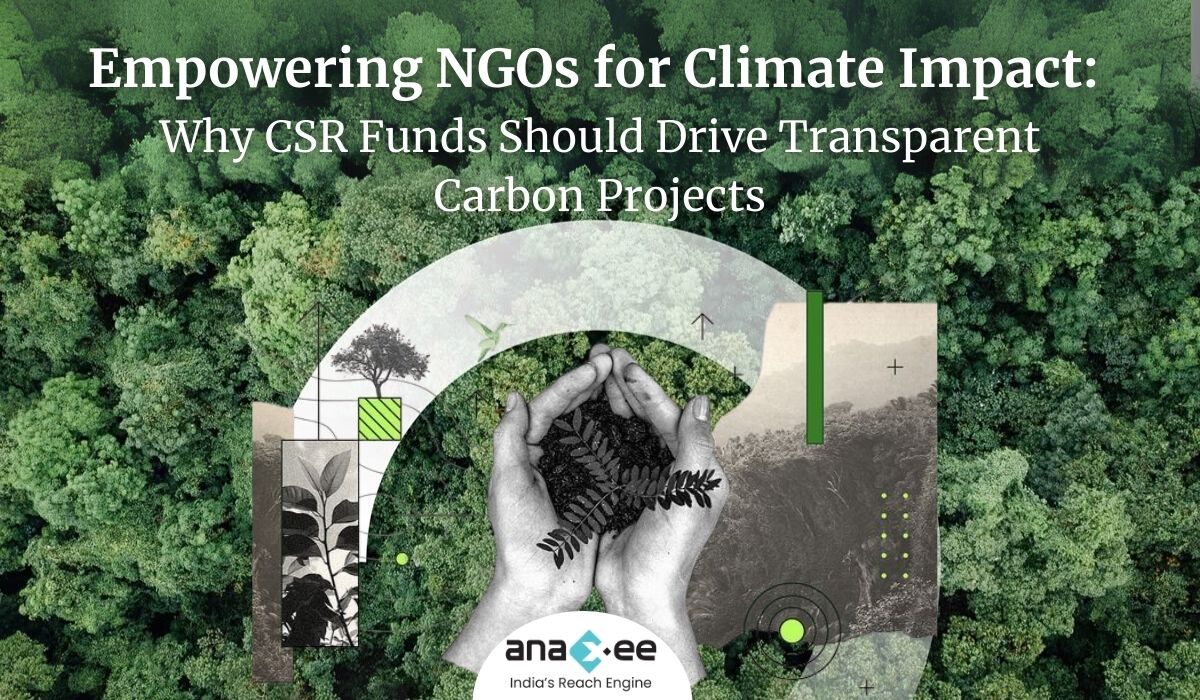
Empowering NGOs for Climate Impact: Why CSR Funds Should Drive Transparent Carbon Projects
Empowering NGOs for Climate Impact: Why CSR Funds Should Drive Transparent Carbon Projects
When we talk about climate change, carbon credits, and sustainability, the conversation often stays at the level of governments, corporations, and global frameworks. But there’s a crucial layer in this ecosystem that is too often overlooked: NGOs.
NGOs sit at the intersection of local communities and big institutions. They are the boots on the ground, the ones closest to the farmers, the women’s self-help groups, the tribal communities, and the local biodiversity hotspots. Yet, they face very real constraints that prevent them from turning small-scale action into long-term, transparent climate impact.
This is where CSR funding comes in—and where the partnership model between corporates, NGOs, and implementation partners like Anaxee can change the game.
Why NGOs Matter in Climate and Carbon Projects
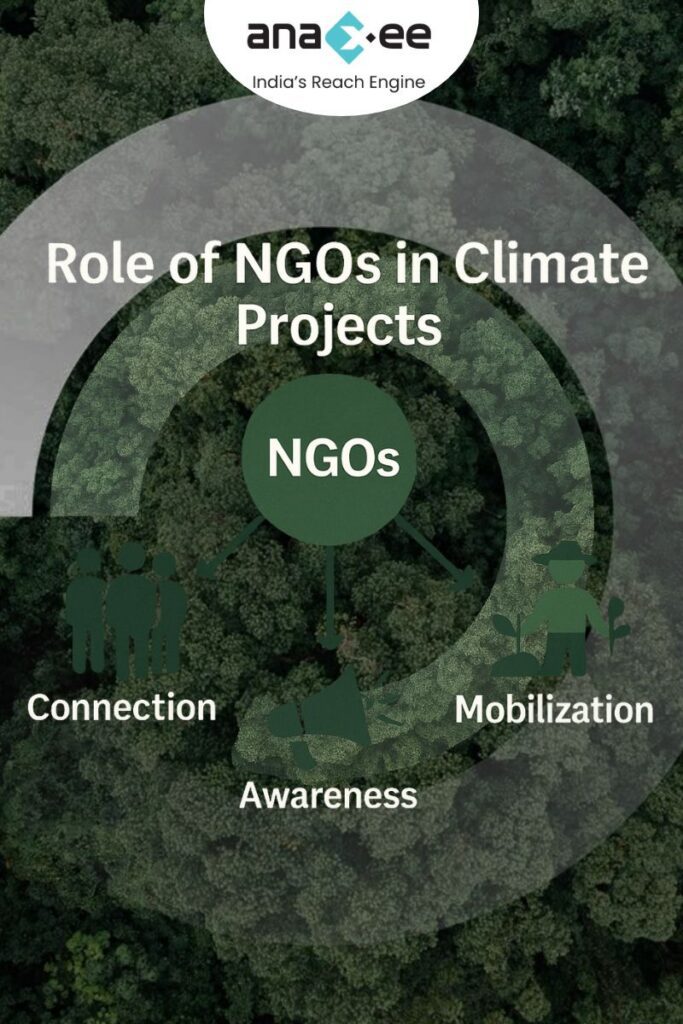
NGOs are not just about charity drives or awareness campaigns. In the context of climate projects, they play three essential roles:
- Community Connect: NGOs already have trust-based relationships with local people. Whether it’s mobilizing farmers for agroforestry or convincing households to adopt renewable practices, NGOs provide a starting point that no corporate or government body can replicate.
- Grassroots Awareness: For many communities, climate change is still an abstract concept. NGOs simplify it. They translate jargon into stories and actions that resonate at the village level.
- Mobilization Capacity: NGOs can move people—literally. They have field volunteers, coordinators, and networks that can be activated quickly when projects begin.
But these strengths come with serious limitations.
The Limitations NGOs Face in Climate Work
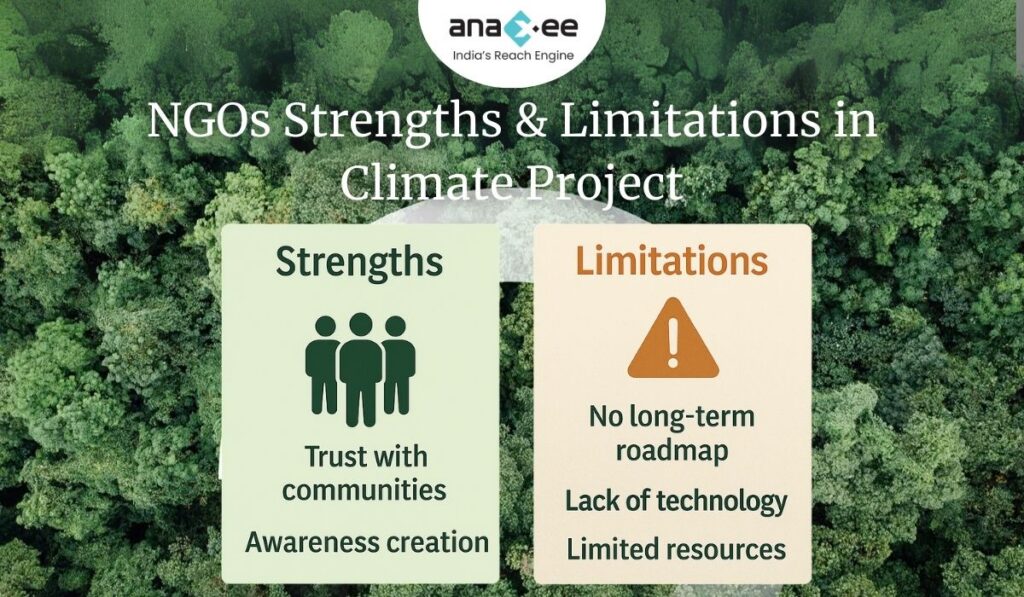
Let’s not romanticize NGOs. They cannot bring integrity and transparency to climate projects by themselves. Some of the challenges include:
-Limited Resources: Most NGOs operate on tight budgets, relying on grants or sporadic donations. Scaling a 20-year climate project with limited funds is unrealistic.
-No Roadmap: NGOs often lack long-term strategic plans, especially when it comes to 15–20 year carbon programs. They work on project-to-project cycles.
-Tech Gaps: Monitoring, reporting, and verification (MRV) requires data systems, apps, drones, and satellite integrations—things most NGOs don’t have access to.
-Fragmented Knowledge: While NGOs understand communities, they are not trained in carbon accounting, climate methodologies, or market dynamics.
In short: NGOs are necessary, but not sufficient.
Why CSR Funds Should Flow Into Climate and Carbon Projects
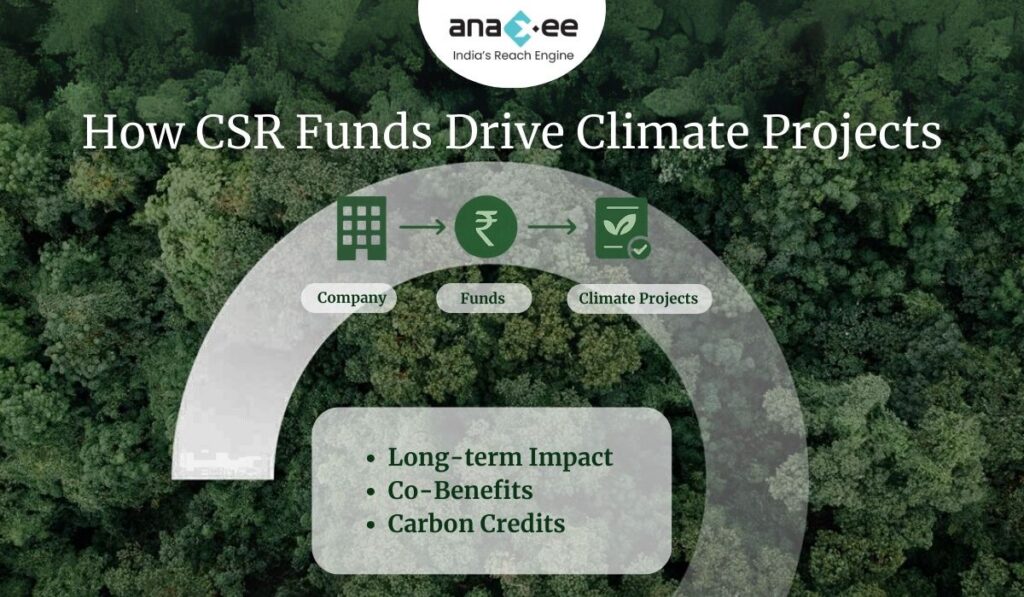
Corporate Social Responsibility (CSR) in India has come a long way since it became mandatory under the Companies Act, 2013. But here’s the reality: many CSR projects still go into short-term welfare activities. While important, these projects don’t address systemic risks like climate change.
Directing CSR funds into climate and carbon projects is not just a box-ticking exercise. It creates:
- Long-Term Impact: Trees planted today under agroforestry or reforestation programs can generate climate and livelihood benefits for decades.
- Community Co-Benefits: Climate projects linked with NGOs improve income, awareness, and resilience at the grassroots level.
- Carbon Credits & Transparency: Unlike one-time charity drives, CSR climate projects can generate measurable credits and verifiable impact.
Companies like Tata, Mahindra, and ITC have already shifted large portions of CSR toward climate and sustainability. This is a growing trend corporates can’t ignore.
Why Empowering NGOs is the Missing Link
Here’s the blunt truth: if you want integrity, transparency, and scale in your CSR-funded climate project, you cannot just hand the money to an NGO and hope for the best.
You have to empower them.
Empowering NGOs means:
-Giving them access to tech platforms that capture real-time project data.
-Providing them with training and roadmaps so they understand carbon markets and long-term commitments.
-Integrating them with implementation partners like Anaxee who specialize in large-scale project execution, MRV systems, and transparency frameworks.
Without this empowerment, NGOs remain underutilized and corporates risk funding projects that look good on paper but fail to deliver measurable climate benefits.
How Anaxee Bridges the Gap
At Anaxee, we’ve seen both sides of the story: NGOs struggling with scale, and corporates searching for trusted partners who can deliver climate results.
We solve this by:
-Deploying Digital Runners across India to collect data, verify impact, and ensure accountability.
-Offering dMRV tools that NGOs can use to bring transparency to projects.
-Designing long-term project roadmaps that align with Verra or Gold Standard methodologies, something NGOs alone cannot draft.
-Acting as the integrity backbone, so corporates know their CSR money isn’t lost in fragmented or unverifiable activities.
Looking Ahead: CSR, NGOs, and the Future of Climate Action
The future of climate CSR isn’t about giving NGOs more responsibilities—it’s about giving them more power, tools, and partnerships.
Corporates will increasingly be held accountable not just for spending CSR money, but for showing real climate results. NGOs will remain critical at the community level, but their impact will only be multiplied when they’re embedded in transparent, tech-driven frameworks.
So, if you’re a corporate leader deciding where your CSR budget should go, here’s the takeaway:
-Don’t ignore NGOs, but don’t overestimate them either.
-Use your CSR funds in climate projects with long-term co-benefits.
-Partner with organizations like Anaxee that bring the missing layer of transparency and scale.
Because the climate fight isn’t just about planting trees or funding workshops—it’s about building systems of trust, integrity, and measurable impact.
About Anaxee: Anaxee drives large-scale, country-wide Climate and Carbon Credit projects across India. We specialize in Nature-Based Solutions (NbS) and community-driven initiatives, providing the technology and on-ground network needed to execute, monitor, and ensure transparency in projects like agroforestry, regenerative agriculture, improved cookstoves, solar devices, water filters and more. Our systems are designed to maintain integrity and verifiable impact in carbon methodologies.
Beyond climate, Anaxee is India’s Reach Engine- building the nation’s largest last-mile outreach network of 100,000 Digital Runners (shared, tech-enabled field force). We help corporates, agri-focused companies, and social organizations scale to rural and semi-urban India by executing projects in 26 states, 540+ districts, and 11,000+ pin codes, ensuring both scale and 100% transparency in last-mile operations. Connect with Anaxee at sales@anaxee.com
